Each year sees the release of several different surveys and reports ranking the most expensive cities in the world – and they’re not always in agreement. Different surveys take different factors into account.
But the same cities tend to pop up on most lists, providing a fairly definitive picture of those with the highest cost of living.
We examined two of the most well-known lists — the Economist Intelligence Unit’s Worldwide Cost of Living Survey and the Mercer Cost of Living Survey — and other sources like the UBS Price and Earnings Survey 2018. The result? Our own list of 18 of the most expensive cities to live in the world.
Note: U.S. cities fell in Mercer’s rankings “due to a steady pickup of the European economy, which triggered a decline of the US dollar against other major currencies worldwide.” Also, If you’re considering a move to another city, it pays to do your research. To make your savings stretch as far as possible, you need to know the cost of renting or buying property, paying for groceries, clothes and other essentials, entertainment and transport. However, it’s also important to have the full picture, so consider your potential income — in many cities with a high cost of living, the average wage is also higher.
Singapore

In 2018, the EIU Worldwide Cost of Living Survey ranked Singapore as the most expensive city in the world for the fifth year running. Getty Images
Population: 5,791,901
Median home price: SG 22,309 (U.S. $16,412) per square meter
Average monthly rental price: SG $2,666.53 (U.S. $1,974) for a two-bedroom apartment
Average salary: SG $67,152 (U.S. $49,714)
In March 2018, the Economist Intelligence Unit (EIU) released the fifth installment of its annual study of the global cost of living, the Worldwide Cost of Living Survey, and ranked Singapore the most expensive city in the world for the fifth year running.
Singapore also came fourth in the Mercer Cost of Living Survey 2018. This South-East Asia city state – which is also a province and a country – has a high level of expensive foreign workers, which means demand for accommodation and imported produce is high.
Paris, France
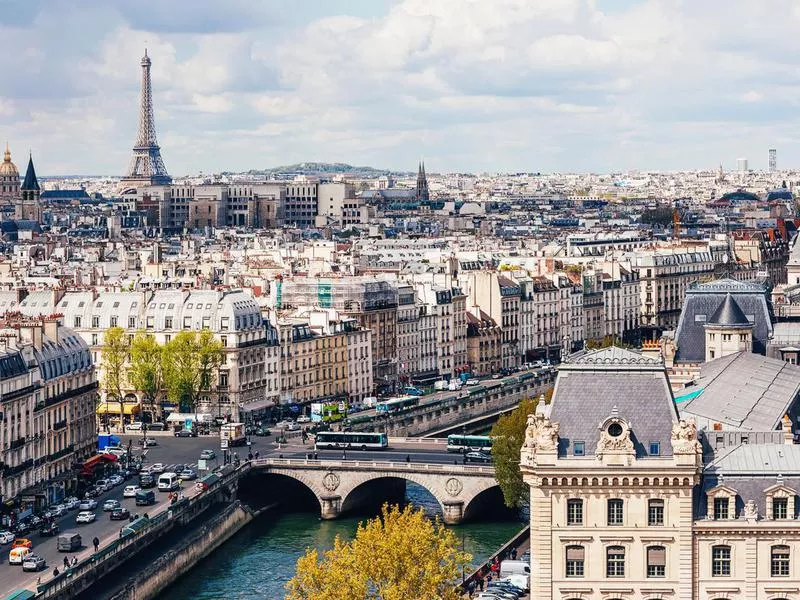
The majority of purchases and services, including entertainment, clothing and groceries, are more expensive in Paris than in any other EU city. Getty Images
Population: 2,241,346
Median home price: €9,070 (U.S. $10,574) per square meter
Average monthly rental price: €1,335 (U.S. $1,526) for a two-bedroom apartment
Average salary: €48,908 (U.S. $55,908)
The Worldwide Cost of Living Survey found Paris to be the world’s second most expensive city, and the most expensive city in the European Union. Analysts say the majority of purchases and services, including entertainment, clothing and groceries, are more expensive in Paris than in any other EU city, with a couple of exceptions: tobacco and wine.
In 2017, a standard bottle of table wine in Paris cost an average $10.35, compared to $23.68 in Singapore and $26.54 in Seoul. So living in one of the biggest wine-producing nations has benefits for all the wine drinkers out there.
Zurich, Switzerland
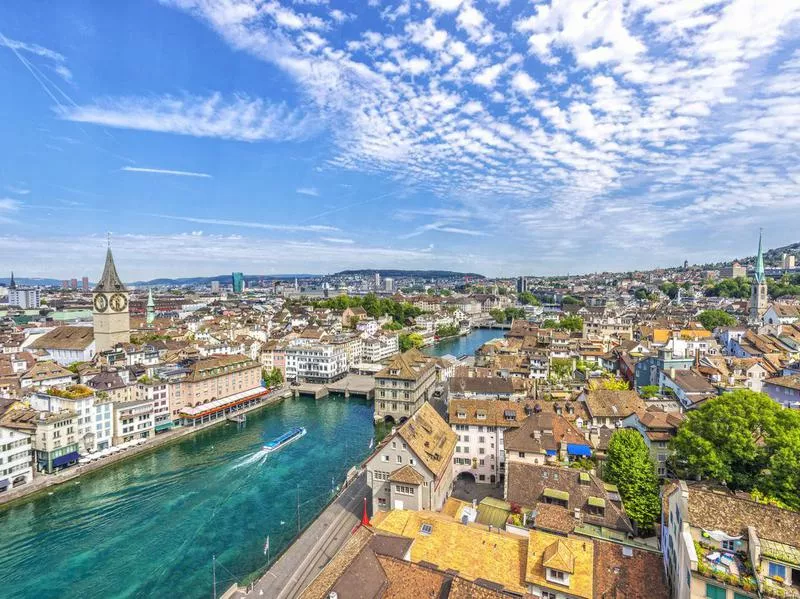
The Worldwide Cost of Living Survey and the Mercer Cost of Living survey found Zurich to be the world’s third most expensive city. Getty Images
Population: 402,762
Median home price: CHF 13,000 (U.S. $13,036) per square meter
Average monthly rental price: CHF 2,324 (U.S. $2,330) for a three-bedroom apartment
Average salary: CHF 103,296 (U.S. $103.298)
Both the Worldwide Cost of Living Survey and the Mercer Cost of Living survey found Zurich to be the world’s third most expensive city. And other surveys rank this Swiss city even higher for overall cost of living, such as the UBS Price and Earnings Survey 2018, which measures how much people earn and how much the items in their average shopping basket cost, relative to New York City. The most recent results place Zurich in second place, after Los Angeles.
Hong Kong, China

Hong Kong is particularly expensive when it comes to housing. Getty Images
Population: 7,428,887
Median home price: HK $229,244 (U.S. $29,203) per square meter
Average monthly rental price: HK $29,342 (U.S. $3,737) for a two-bedroom apartment
Average salary: HK $374,569 (U.S. $47,742)
Hong Kong topped the Mercer Cost of Living Survey, which is designed to show the cost of living for expatriates and takes into consideration housing as well as a 200-strong “international basket of goods and services,” including clothing, food, transportation and entertainment.
Hong Kong, which also came fourth in the Worldwide Cost of Living Survey, is particularly expensive when it comes to housing, ranking as the least affordable city for housing in the world for eight years running, according to the annual Demographia International Housing Affordability Survey.
Tokyo, Japan
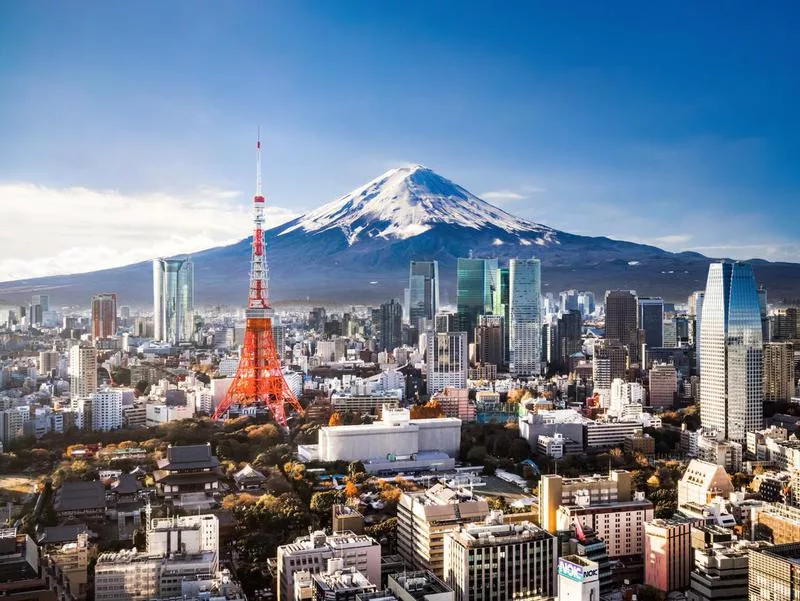
Taking into account hundreds of common expenses, such as clothes, food, entertainment and gas, Tokyo is a pretty pricey place to live. Getty Images
Population: 13,750,000
Median home price: JPY 64,870,000 (U.S. $603,000)
Average monthly rental price: JPY 190,348 (U.S. $1,740) for a two-bedroom apartment
Average salary: JPY 5,712,992 (U.S. $52,071)
Low inflation caused Japan’s capital city Tokyo to drop out of the top 10 of the Worldwide Cost of Living Survey in 2018 – it was the EIU’s most expensive city in the world until 2013 – but it came second in the Mercer Cost of Living Survey.
This was a movement upward of one position from the previous year, despite a weakening of the national currency, the yen, against the dollar. Taking into account hundreds of common expenses, such as accommodation, transport, clothes, food, entertainment and gas, Tokyo is a pretty pricey place to live.
Oslo, Norway
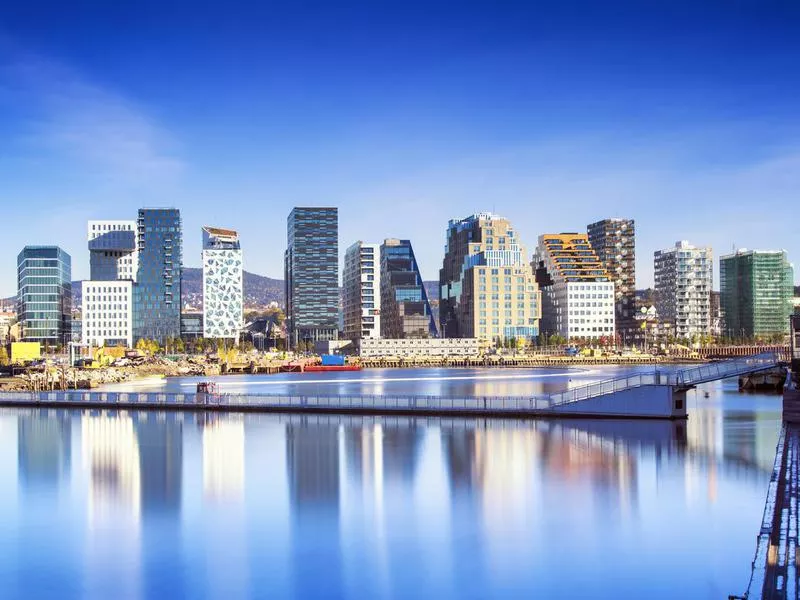
Despite being an oil-producing country, Norway has the highest gas prices in the world. Getty Images
Population: 545,000
Median home price: NOK 74,431 (U.S. $8,623) per square meter
Average monthly rental price: NOK 16,536 (U.S. $1,949) for a two-bedroom apartment
Average salary: NOK 654,027 (U.S. $75,756)
The Norwegian capital Oslo came fifth in the Worldwide Cost of Living Survey, and car drivers in particular feel the pinch of living in this city. Despite being an oil-producing country, Norway has the highest gas prices in the world.
However, there are many financial benefits to living in Oslo. Unemployment is low, wages are high and – according to the International Monetary Fund – Norway ranks as one of the wealthiest nations in the world in monetary value, with rich resources of oil, natural gas, forests, minerals and hydroelectric power.
In recent years, world bankers have deemed the Norwegian currency, the krone, to be one of the most steady in the world.
Geneva, Switzerland
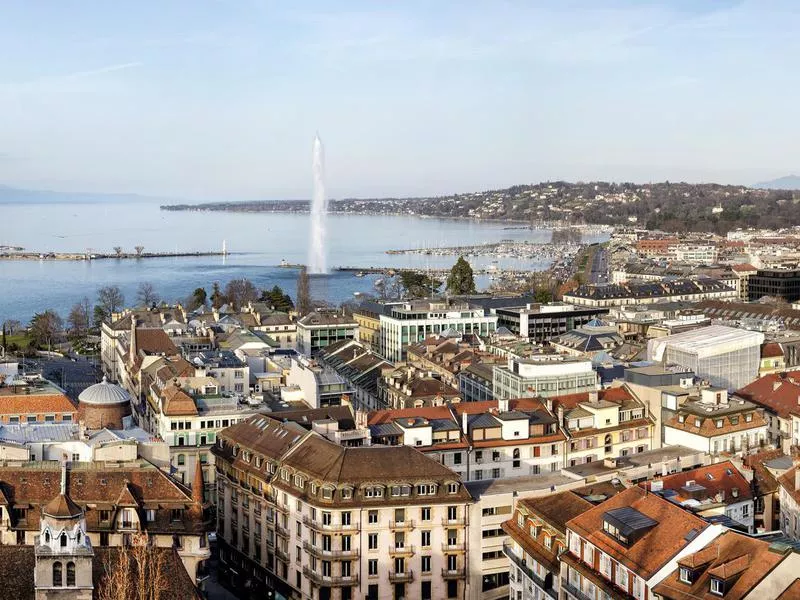
Housing is an average of $240 more expensive per month in Geneva than Zurich. Getty Images
Population: 198,979
Median home price: CHF 337,112 (U.S. $338,100)
Average monthly rental price: CHF 1,995 (U.S. $2,001) for a three-bedroom apartment
Average salary: CHF 109,295 (U.S. $100,881)
Another costly Swiss city is Geneva, which came sixth in the Worldwide Cost of Living Survey. Despite ranking as more affordable overall than Zurich in this survey, the USB Price and Earnings Survey 2018 found that Geneva is more expensive when it comes to food, with a European family of three paying an average $705.80 a month for food, compared to $629.30 in Zurich. Housing is also an average of $240 more expensive per month in Geneva than Zurich.
Seoul, South Korea
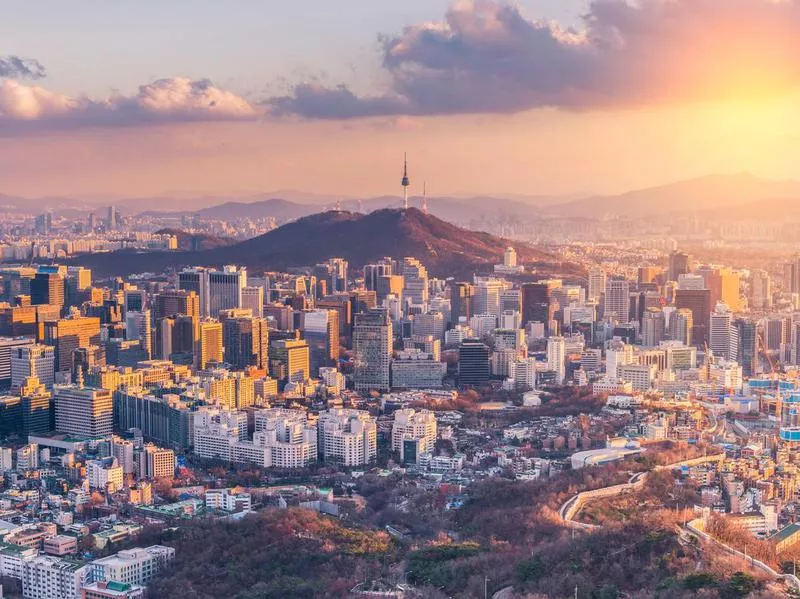
Seoul is particularly expensive for buying everyday food items, clothes and apparel – around 50 percent pricier than in New York City. Getty Images
Population: 10,290,000
Median home price: KRW 15,204,278 (U.S. $13,529) per square meter
Average monthly rental price: KRW 2,144,285.71 (U.S. $1,908) for a three-bedroom apartment
Average salary: KRW 53,835,001 (U.S. $48,639)
The Worldwide Cost of Living Survey found Seoul to be the world’s seventh most expensive city – a climb of 43 places in just five years – while it ranked fifth in the Mercer survey.
According to analysts, the South Korean capital is particularly expensive for buying everyday food items, clothes and apparel – around 50 percent pricier than in New York City. Seoul’s high prices may be due to the strength of the won (the South Korean currency) and high tariffs on imports.
Copenhagen, Denmark
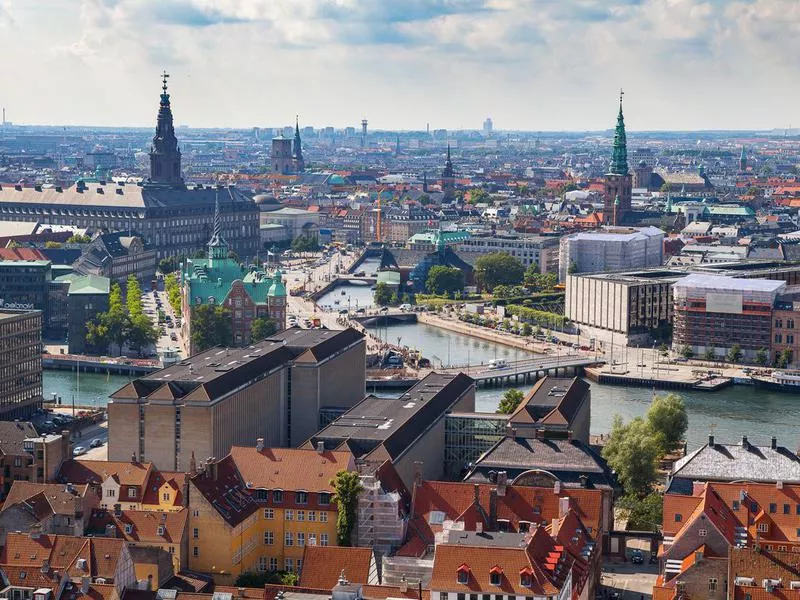
in 2017, two liters of Coca-Cola was 141 percent more expensive in Copenhagen than in New York City. Getty Images
Population: 1,260,000
Median home price: DKK 45,808 (U.S. $6,952) per square meter
Average monthly rental price: DKK 12,061 (U.S. $1,848) for a two-bedroom apartment
Average salary: DKK 538,271 (U.S. $87,950)
Ranking eighth on the Worldwide Cost of Living Survey, the Danish capital city Copenhagen has a reputation for expensive clothes, personal grooming, beer and even soda – in 2017, two liters of Coca-Cola was 141 percent more expensive in Copenhagen than in New York City.
However, Denmark consistently ranks highly on the World Happiness Report, and you can’t put a price tag on happiness, right?
Dubai, United Arab Emirates

Dubai has a huge foreign worker population, which is a clue that the cost of living will be high for expats. Getty Images
Population: 3,137,000
Median home price: AED 2,780,000 (U.S. $760,000)
Average monthly rental price: AED 6,562 (U.S. $1,787) for a two-bedroom apartment
Average salary: AED 137,752 (U.S. $37,509)
Dubai has a huge foreign worker population, which is always a clue that the cost of living will be high for expats.
In the USB Price and Earnings Survey, this Middle Eastern city came third on a chart comparing monthly living costs for a European family, including food, household goods, clothing and local “expat extras” such as renting a two-bedroom furnished apartment, international school tuition fees for kids, household help twice a month and a language course.
Buenos Aires, Argentina
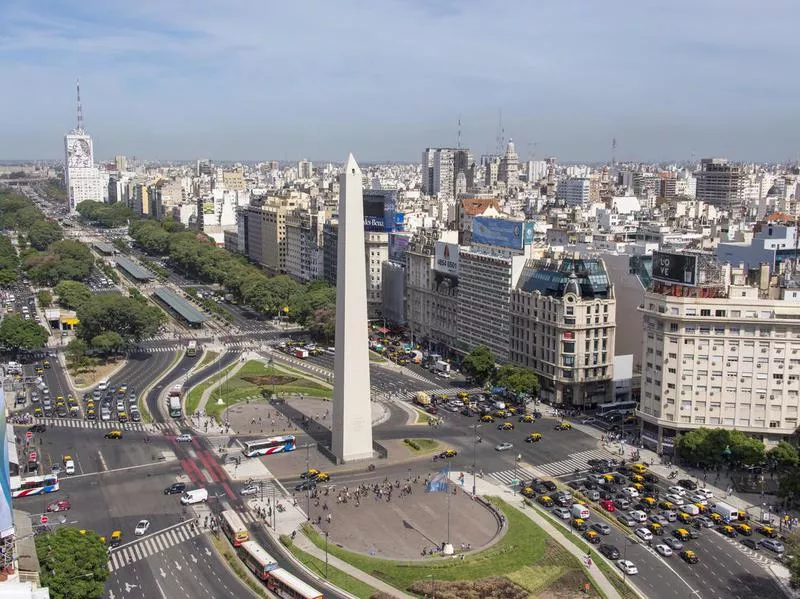
The USB survey found Buenos Aires to be the most expensive place for millennials. Getty Images
Population: 2,891,000
Median home price: ARS 110,780 (U.S. $2,928) per square meter
Average monthly rental price: ARS 18,954 (U.S. $501) for a three-bedroom apartment
Average salary: ARS 292,791 (U.S. $7,642)
The Argentinian capital and fifth largest city in South America didn’t feature in the top 10 of the Worldwide Cost of Living Survey or the Mercer Cost of Living Survey, but the USB survey found Buenos Aires to be the most expensive place to live for one particular group: millennials.
They reached this conclusion by comparing the prices of millennial “essentials,” such as iPhones, avocados, jeans, sneakers, Big Macs and coffee, in cities across the world. If you’re planning a move to Buenos Aires, buy your iPhone X before you go – it costs a staggering $2,244 there, almost double than it does anywhere else.
Tel Aviv, Israel
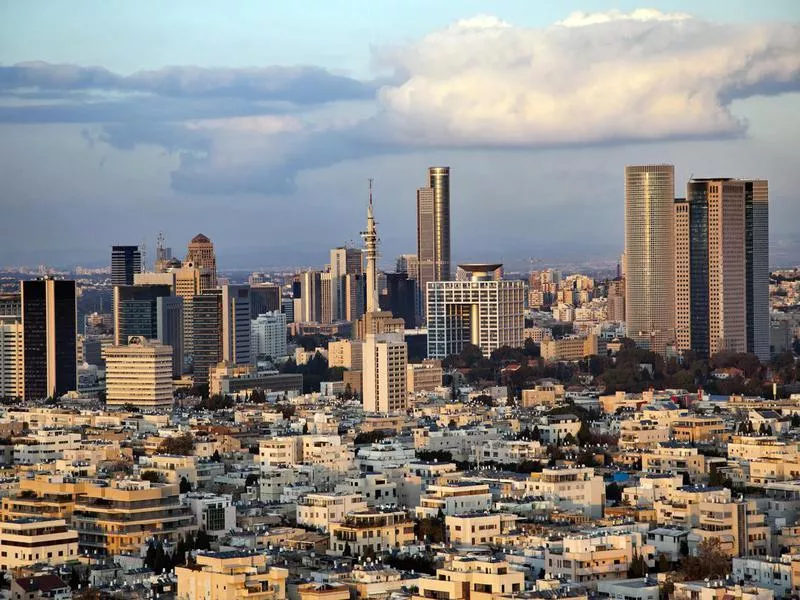
It’s particularly expensive to buy, insure and maintain a car in this coastal tech hub. Getty Images
Population: 432,892
Median home price: ILS 2,176,700 (U.S. $610,053)
Average monthly rental price: ILS 5,603 (U.S. $1,526)
Average salary: ILS 145,959 (U.S. $40,026)
The appreciation of Israel’s currency, the shekel, has pushed up consumer expenses on everything from food and drink to rent, utilities and education, leading to Tel Aviv’s ninth place spot on the Worldwide Cost of Living Survey.
It’s particularly expensive to buy, insure and maintain a car in this coastal tech hub – in fact, it costs 79 percent more to own a car there than in New York City, despite the average U.S. income being more than double that in Israel. Alcohol is also pricey in Tel Aviv, with a bottle of table wine costing an average of $28.77, more than any other city in the world.
Sydney, Australia
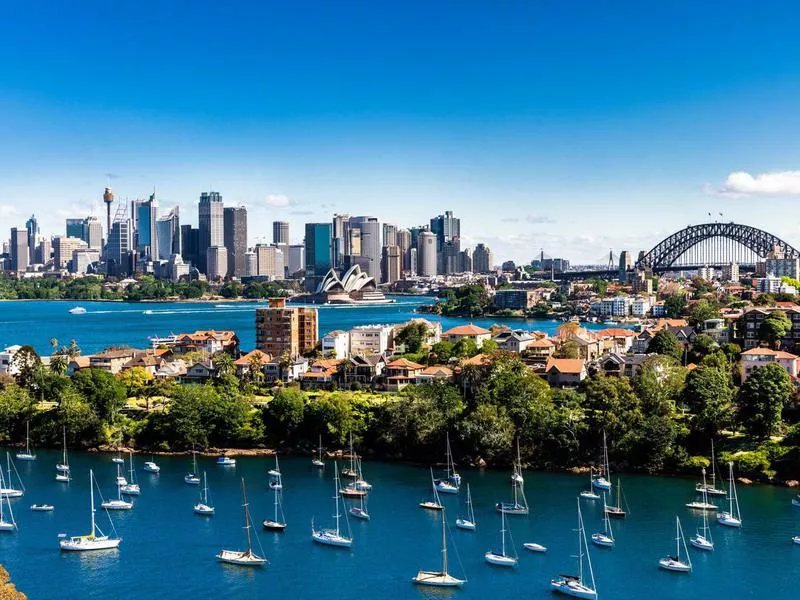
In 2018, Sydney made the Worldwide Cost of Living Survey top 10 for the first time. Getty Images
Population: 5,131,326
Median home price: AU $1,100,000 (U.S. $792,215)
Average monthly rental price: AU $2,849 (U.S. $2,052) for a two-bedroom apartment
Average salary: AU $67,477 (U.S. $47,700)
Sydney made the Worldwide Cost of Living Survey top 10 for the first time ever in 2018, rising four places from the previous year to 10th. Previously, the Annual Demographia International Housing Affordability Survey found the Australian city the second least affordable city for housing, with house prices almost 13 times higher than the median household income.
It turns out that even Australians can’t quite explain why house prices are so high in Sydney, but it may be a simple case of supply not keeping up with demand.
Luanda, Angola
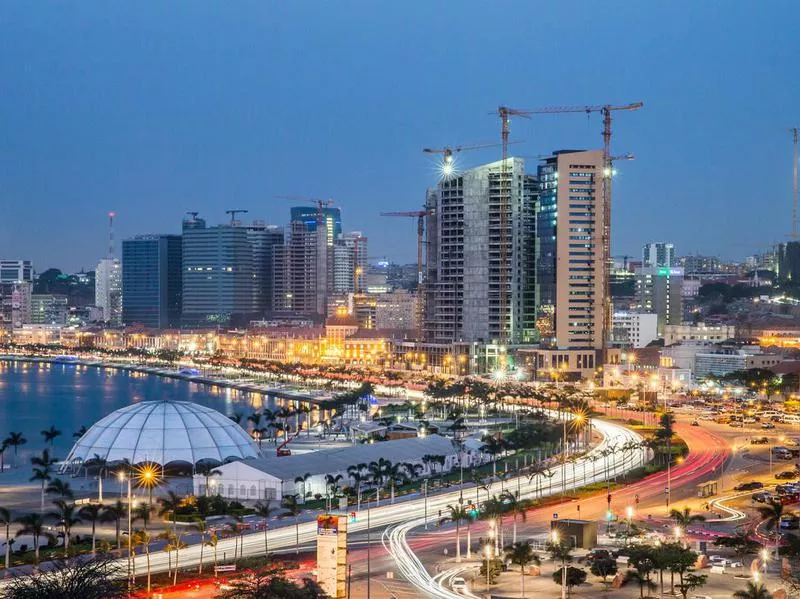
Angola’s high oil production results in a large community of foreign workers and expats who are willing to pay extremely high rents. Getty Images
Population: 2,487,000
Median home price: AOA 2,247,100 (U.S. $7,175.85) per square meter
Average monthly rental price: AOA 2,275,017 (U.S. $7,265) for a three-bedroom apartment
Average salary: AOA 6,396,945 (U.S. $20,428)
It’s hard to believe that the capital city of a country where half of its inhabitants survive on less than $2 a day is one of the most expensive cities in the world, but Luanda ranked sixth on the Mercer Cost of Living Survey. It all comes down to Angola’s high oil production, which results in a large community of foreign workers and expats who are willing to pay extremely high rents – in 2017, the average cost of renting an unfurnished three-bedroom house of “international standards in an appropriate neighbourhood” was a whopping $13,000 U.S. dollars – as well as eye-watering groceries and dining out costs.
Shanghai, China
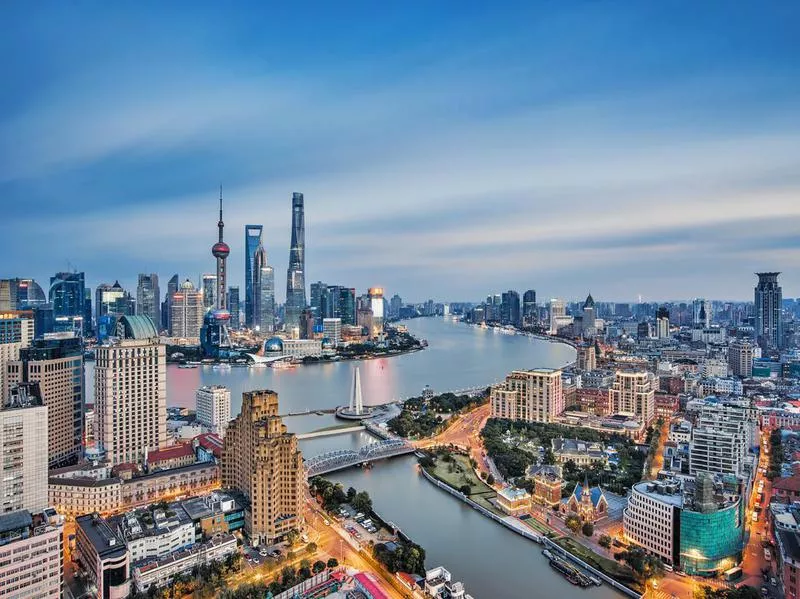
On the plus side, it’s still cheaper to live in Shanghai than in other Asian cities. Getty Images
Population: 24,180,000
Median home price: CNY 96,869 (U.S. $14,363) per square meter
Average monthly rental price: CNY 9,020 (U.S. $1,343) for a two-bedroom apartment
Average salary: CNY 308,262 (U.S. $45,382)
The so-called business capital of China, Shanghai ranked seventh on the Mercer Cost of Living Survey and 48th on the USB Price and Earnings Survey. On the plus side, it’s still cheaper to live in Shanghai than in other Asian cities Hong Kong, Tokyo, Singapore and Seoul.
However, you can expect to fork over a lot of money for your coffee, with the average price of a cup of medium Americano ranking sixth most expensive ($4.60) in the world.
Beijing, China

Beijing placed ninth in the Mercer Cost of Living Survey. Getty Images
Population: 21,540,000
Median home price: CNY 4,020,000 (U.S. $598,436)
Average monthly rental price: CNY 4,960 (U.S. $724) per month for a one-bedroom apartment
Average salary: CNY 259,317 (U.S. $38,178)
Beijing may be cheaper than Hong Kong and Shanghai, but it still made ninth place in the Mercer Cost of Living Survey. Housing prices have been steadily increasing there over the past decade and international school fees are also expensive.
“Stronger Chinese monetary regulations, a flourishing economy and a push to have the Chinese yuan as an international currency pushed Chinese cities up in the ranking,” said Mercer’s Yvonne Traber in a news release on the company’s website.
Bern, Switzerland
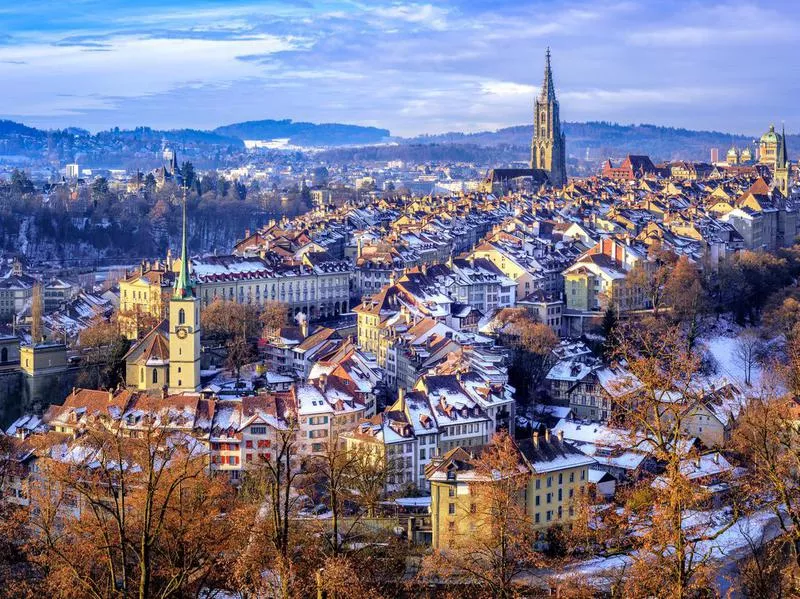
The Swiss capital city came tenth in the Mercer Cost of Living Survey. Getty Images
Population: 142,656
Median home price: CHF 7,666 (U.S. $7,666) per square meter
Average monthly rental price: CHF 1,655 (U.S. $1,653) per month for a two-bedroom apartment
Average salary: CHF 89,791 (U.S. $89,461)
The Swiss capital city came tenth in the Mercer Cost of Living Survey – more evidence that Switzerland is an expensive place to live, period. In fact, the most recent Eurostat consumer price figures put Switzerland as the most expensive European country overall and shows that consumer prices in Switzerland are 61 percent higher than the EU average.
In another survey carried out by ECA International, the Swiss cities Zurich, Geneva, Basel and Bern claimed four of the top five spots for the most expensive places to live in the world for expats.
N’Djamena, Chad
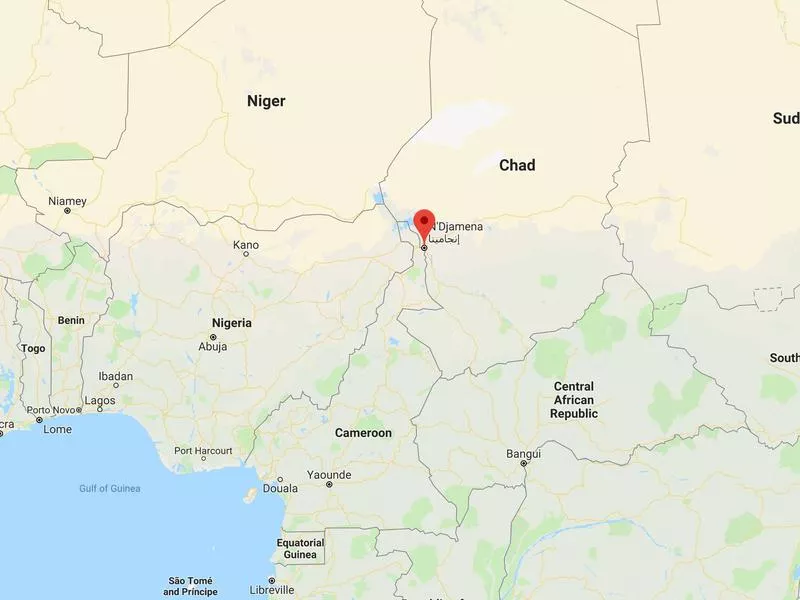
Like Luanda, N’Djamena’s high living costs are largely due to oil. Google Maps
Population: 721,081
Median home price: Not available
Average monthly rental price: XAF 1,378,000 (U.S. $2,400) for a three-bedroom apartment
Average net salary: XAF 1,200,000 (U.S. 2,064)
N’Djamena has lingered in the top 10 most expensive cities for several years, and in 2018 ranked eighth in the Mercer Cost of Living Survey, despite being the capital of Chad, one of Africa’s most impoverished countries.
Like Luanda, N’Djamena’s high living costs are largely due to oil – there’s plenty of the stuff in Chad, which makes its capital a hugely desirable place to stay for oil companies and expats, who arrive with deep pockets and expensive tastes.